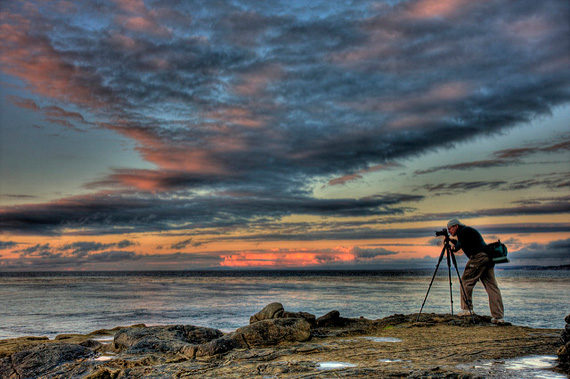It’s one of the unfortunate ironies of the business of photography that the two most important elements in getting great photographs are, for most budding photographers, the least interesting.

Photo by Nathan Rupert; ISO 100, f/4, 1/513-second exposure.
Lighting
The key to any good photo is lighting. Certainly in these days of Photoshop and Lightroom you can take otherwise average pictures and make them better with high tech wizardry, but to consistently get great photos and to get consistently high enough quality to make money from photography, you have to be a lighting wizard.
For shooting outdoors and landscapes that means scouting locations and waiting, sometimes for hours, to get just the right light. It means hiking through the woods in the dark to get back to your car.
For portraits and fashion it means never being satisfied with basic three or five point lighting setups, but constantly trying out new lighting setups to see what results you get.
Photographers use light the same way an artist uses paint, to bring out the subtle perfection in a subject. Good lighting is tedious and meticulous, two reasons few photographers rarely ever master it.

Photo by Thomas Hawk; ISO 500, f/4, 1-second exposure.
Lenses
The other element of great photography is great glass. There’s a reason many professional photographers will go to great lengths to ship lenses off to a lab somewhere that will fit them for a new camera. Camera bodies come and go, but good glass will last a lifetime.
These days it’s easier to get good glass without a second mortgage on your house. Computer controlled milling machines and advanced optical coatings mean fewer rejected lenses and less reliance on the skill of the person assembling them.
Sometimes you’ll hear people hate on kit lenses—a kit lens is the lens that comes with a new camera. Keep in mind that camera manufacturers have an interest in making their cameras as compelling as possible to new users, and the glass they select as the “kit” lens has improved a great deal over the years. Kit lenses are not usually as fast as more expensive lenses, meaning the higher priced lenses usually have a wider aperture, but in the middle of their aperture range, most kit lenses are quite good.
Even at that, the hunt for the perfect lens will be long and expensive and every photographer has a bag of old lenses that didn’t stand the test of time. That’s just part of growing in the craft.
Separate Yourself From the Pack
Focusing on those two elements, lighting and lenses, will separate you from 90 percent of the pack who want to be professional photographers but lack the discipline to get there.
You’ll find a great many people agonize over cameras, comparing this feature and that with different manufacturers; many people put less thought into who they marry! And yet the camera is really just the image recording device; the lighting and the lens make the image.
Think about the last time you heard someone agonize over the differences between an AlienBees and Bowens flashes, and yet those are the people who go on to become professionals who make a living at photography.
About the Author:
Peter Timko writes on behalf of Proud Photography, which offers online photography courses on a variety of subjects.
Like This Article?
Don't Miss The Next One!
Join over 100,000 photographers of all experience levels who receive our free photography tips and articles to stay current:






Leave a Reply